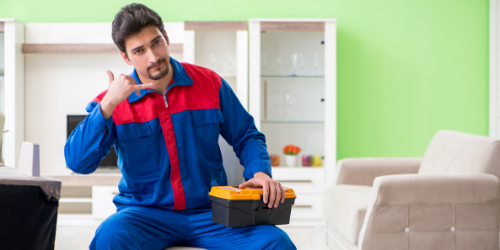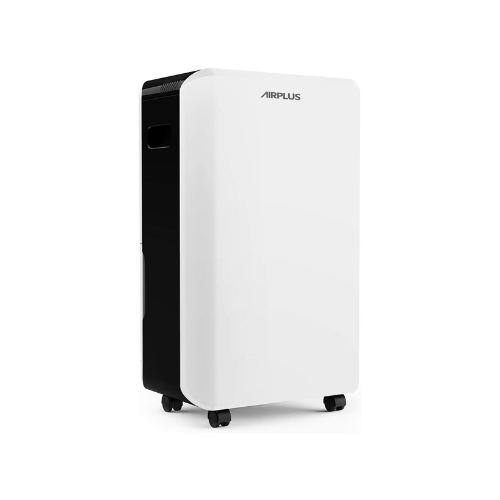How to tell if dehumidifier is working?
3 Key Takeaways:
🚀 A dehumidifier is an electrical device that helps control the relative humidity level in a room by absorbing excess moisture content in the air.
🚀 High humidity can cause many problems such as mold and mildew growth, musty odor, rotting of wood, dampness, dust mites, health and respiratory problems, etc.
🚀 A dehumidifier can be checked if it’s working properly by using a hygrometer. Run the dehumidifier for over an hour and check the reading of the hygrometer.
A dehumidifier is an electrical device that is every homeowner’s best friend. Keeping high humidity at bay is primordial. Many face issues from a high humidity level in their homes or industries. The problems one encounters with increased humidity are many; mold and mildew growth, musty odor, rotting of wood, dampness, dust mites, health, and respiratory problems, depression, etc. To avoid this, homeowners ensure that they have a dehumidifier at home to keep the relative humidity level in the room under control. Commercial, industrial, and residential dehumidifiers are becoming more common to find these days.
Once you have selected the manufacturer or brand, and model of your choice, you can begin your journey with this magic appliance. However, a dehumidifier is an electrical device that comes with its own share of requirements. If you notice that your unit is not working properly, it is time for repair and troubleshooting.
The reason why the unit is not working could be related to a number of factors; like power supply, overload, frost build up in the air filter, clogged filters, humidistat operating issues, water collection tank malfunction, condenser or evaporator coils not functioning properly, the compressor may fail, fan motor in need of replacement, etc. Any of these could hinder the operating capacity of your appliance.
Let us learn how to search for the problem, test its functioning, and arrive at a solution when a dehumidifier is not working properly.
What does a dehumidifier do?
A dehumidifier has a specially designed system by which it controls the relative humidity level in the atmosphere. It absorbs the excess moisture content in the air, maintains the relative humidity level between 40% to 60%, and creates a comfortable environment to breathe in. Humid air is thick, filled with moisture, and a host to many problems. It is a breeding ground for bacteria, fungi, mold, mildew, dust mites, and other allergens.
A humid environment makes the home filled with musty odor and dampness, which will lead to rotting of wooden floors, drywalls, and ceiling. Hence, high humidity is trouble to one’s health and property.
Extremes of temperatures are never healthy. A dehumidifier by extracting moisture from the air curbs the related problems that could arise from it. You can stay assured that your home is protected. You will also bid goodbye to allergies, asthma, difficulty in breathing, stuffy nose, itchy eyes, dryness in skin, and other respiratory and health problems that could come from increased humidity.
Your home and every room in it will be free from dampness and have the room temperature and humidity under control when you have this appliance installed. This is the best dehumidifier model according to us in today’s market.
How a dehumidifier reduces humidity?

The system of a dehumidifier has two ways of operating. They are; by absorption and by refrigeration. Both are efficient methods when it comes to moisture removal and water collection. You can opt for which unit or model suits your requirement best.
In the first method, the system or unit the moisture is absorbed into a dry material and then removed. In the second method, a refrigerant dehumidifier functions by removing moisture after cooling the air (similar to how refrigeration operates).
“In simpler terms, one could tell that a dehumidifier is similar in function to a vacuum cleaner; wherein the warm humid indoor air is sucked into the unit and the moisture is extracted out of it. This warm air will pass over cold condenser coils in the unit. It is here that the moisture from the air is converted into water vapor and water by condensation.”
The resulting water droplets come down into a water collection tank. Every brand and model has a difference when it comes to collecting water. Some have condensate pumps or water collection bucket. The method of drainage that you choose based on your convenience will decide how to deal with collecting water.
The filtered dry air will now circulate back into the room via the air filters. The filters will clean the air, remove microscopic impurities, allergens, and dust mites. They will send back clean filtered air into the room which is safe to breathe in and free from humidity.
What are the signs to check if the dehumidifier is working properly?
There are many signs that point out that is time to troubleshoot a dehumidifier. A faulty system would give away many hints that something is wrong with the unit. Here are some issues that could reveal what is wrong with the dehumidifier unit and what can be the solution. It is recommended that you call for professional help to repair any internal unit problems that are hard to search for or fix.
1. Dehumidifier not collecting water
One of the first signs to learn that it is time to fix your dehumidifier is when it is not collecting water. If you notice that your device is working but there is no difference in the humidity level, and therefore the room temperature continues to be uncomfortable, you simply have to check on the humidistat. By changing the humidistat to a drier mode could help.
If the repair persists, you have to test the water level. If the device is not collecting water as it used to or should for the existing relative humidity level, it means the system is not functioning properly. You can try to air filters or replace them to remove any clogged area. Despite clean filters the dehumidifier not collecting water? We recommend you call for professional assistance.
2. Dehumidifier blows hot air
You must remember that it is normal for dehumidifiers to produce warm air. But, the difference must be only a couple of degrees higher than the room temperature. If your device is blowing out air that is warmer than the existing room temperature by over 10 degrees Fahrenheit to 15 degrees Fahrenheit, it certainly means something is wrong with the internal parts of your system.
Hot air coming from a dehumidifier could also be due to overload. Just like any other appliance, overload in an electrical device will lead to overheating. When the square feet of the area that the system has to cover or the time duration it operates is beyond its capacity, it can lead to overheating. It is common for dehumidifiers to blow out hot air when their internal parts are heated up.
3. Dehumidifier is leaking
Here is why dehumidifiers could leak. When the system has gotten too cold, it will stop working. As the temperature rises, the water will leak from the bottom of the unit as the ice begins to melt. Also, a refrigerant is meant to cool down the air taken in by the dehumidifier. If units have refrigerants leaking, it means that the hot air absorbed by the unit is no longer cooling down.
The air in the system is just getting hotter instead of being cooled down before being warmed up. This will give you a leaking dehumidifier. A simple fix to this could be turning OFF the device and then turning it ON. Check if the filters are clean and free from any debris having it clogged that might initiate leaking. If none of this work call for an expert to take a look at what is wrong with the dehumidifier.
4. Dehumidifier is icing up
Ice in the coils is another problem that dehumidifiers encounter. Frozen coils are not good for any electrical appliance for that matter. You can cover this problem by turning on the defrost option on the dehumidifier (provided that the model that you have has one). The reason why dehumidifiers ice up is because they have been exposed to extremely low temperatures say below 65 degrees Fahrenheit.
If you are running your device when the climate is too cold you are going to pave way for frost and ice build-up in the coils. Sometimes, poor airflow and a clogged filter can also cause icing. Make sure that you maintain the filters and clean them as often as required to prevent icing.
5. Dehumidifier is making loud noise
Are you handling a noisy dehumidifier? The noise might be coming from the fan motor, compressor mounting brackets, or from any loose screws. Unplug the dehumidifier and check if any of these components are loose. If yes, tighten them and run the machine.
If the noise persists, then the components might be in need of a replacement. Check which internal part is the cause of the noise and test if there is a need to be replaced.
What causes problems in a dehumidifier?
Are you are facing issues such as the dehumidifier not collecting water, the coils are frozen, the fan isn’t working, the compressor is noisy, the tank switch is turned on, etc?
All of these are common problems with dehumidifiers and you will be faced with the need to troubleshoot. Let us take a look into what can go wrong with dehumidifiers.
Dehumidifier not collecting water:
The first sign that one wonders if something is wrong with their machine is when it has an empty water tank. You must check if this is really a problem or just a miscalculation.
If the moisture content or excess water levels in the environment is low, in that case your unit does not have any moisture to extract. You will be getting an empty water tank in this scenario since the unit cannot collect water, since there is no moisture left. Keep a track of temperature fluctuations to rule this out.
Overload:
If the model that you have purchased has an overload protection feature, and it is faulty, the compressor of the machine will not start. Using a defective extension cord can also cause this problem.
Use a multimeter to test if the overload problem is from an extension cord issue or the internal circuits need to be replaced.
Control board:
Problem with the control board will create havoc on how you operate the system. If the control board is in need of a replacement, professional help is necessary.
Coils:
Evaporator coils or compressor coils; have to be monitored on a regular basis to prevent ice formation on them. The auto-Defrost feature can handle this issue for you.
Unit placement:
Not placing dehumidifiers in the right location is also problematic. A system can function to the best of its capacity only when it is placed appropriately.
There are plentiful related posts on the ‘The right place to install a dehumidifier. Speak to professionals on finding the right spot for your system. If this isn’t met, your unit may not perform or collect water as expected.
Water tank:
Another common problem that comes with dehumidifiers is the water tank. A simple switch mechanism that handles the indicator on the tank is sometimes turned on. Adjusting the tank or the switch will take care of the issue.
Filter:
Poor airflow is related to the dusty air filter. Any system that has an air filter must be cleaned as often as possible to prevent clogging and to maintain the quality of the air being circulated within the room. Some systems come with a filter that can be disposed of after use.
If your model has disposable filters, replace them as and when necessary. If you have a reusable filter, clean them as recommended. A filter is designed to trap and collect impurities that pass through it. You would not want to be breathing in air that is passing through debris. Moreover, a blocked filter can also lead to frost buildup.
Fan and motor:
Any problem with the fan and motor can be fixed by a quick repair or by replacing them. You can identify problems with the fan or motor by an unusually loud noise when the unit is running.
How to fix a dehumidifier?

Major faults in any electrical device need professional intervention. Reach out for help from a licensed electrical mechanic rather than attempting to find a solution by yourself.
FAQ Section
1. Who repairs dehumidifiers?
You can contact the outlet or dealer of the company or brand where you made the purchase to fix your dehumidifier. They will send you a qualified technician to repair the dehumidifier.
2. How much it costs to service a dehumidifier?
It could cost anywhere from $70 to $675 to service or repair a dehumidifier.
3. How to make dehumidifiers work efficiently?
1. Service the unit when required.
2. Replace faulty parts.
3. Keep track of power supply and fluctuations, humidity, and temperature level in the room.
4. Pay attention to the placement of the system and its capacity.
5. Purchase the right size of dehumidifier for your room.
4. How to increase lifespan of dehumidifiers?
Set aside time and effort to maintain important internal parts like a fan, motor, filter, coils, circuits, etc. Pay attention to all the small details that go into the working of the machine to increase its lifespan.
Wrapping Up
Hope you found the information about dehumidifier working, common dehumidifier problems, and how to fix them from our article. Contact us for further information and support about dehumidifiers.

About The Author
Olivia — a self-confessed air quality addict — is a home climate enthusiast, fresh air advocate, and someone with deep personal experience and knowledge about mold extermination. Her work was mentioned in countless notable humidity publications. Previously she was an editor at Mold Remediation.
